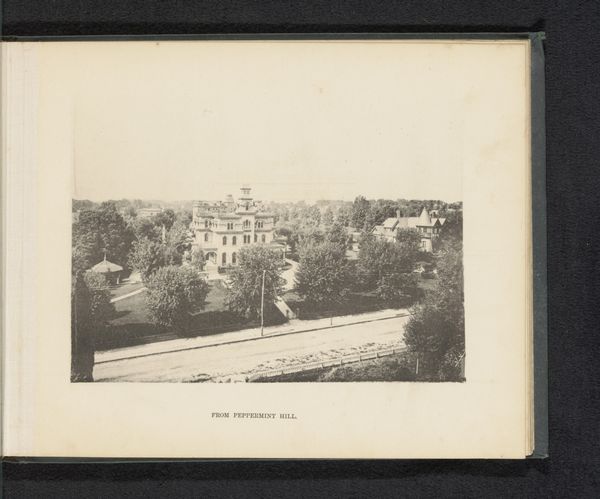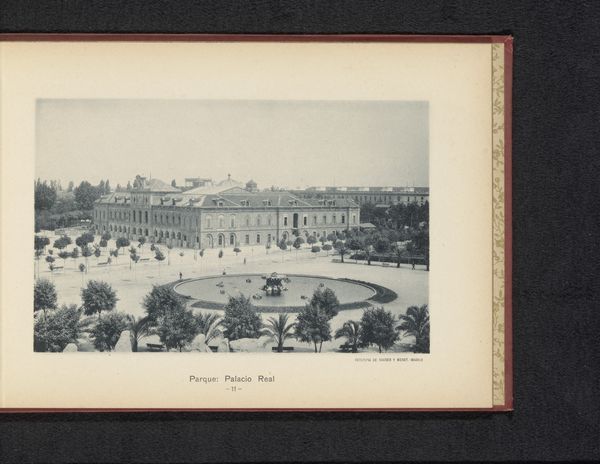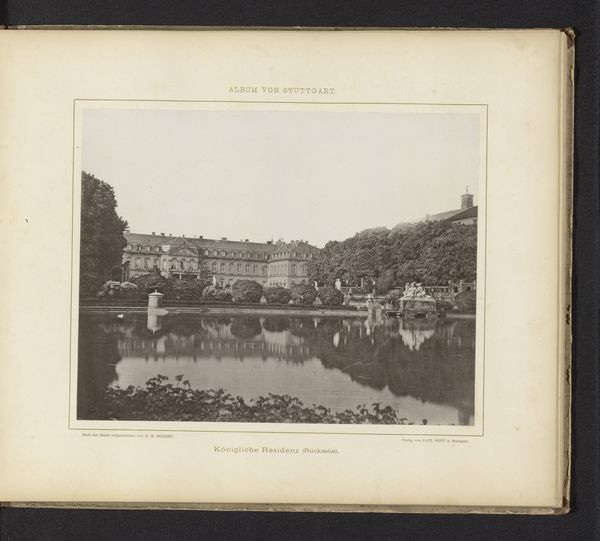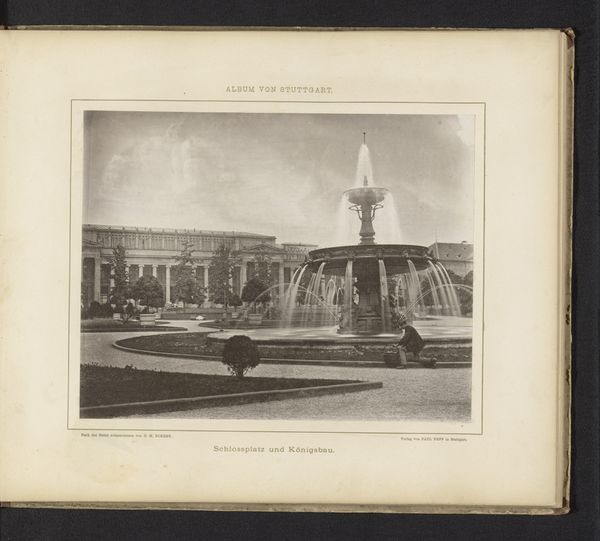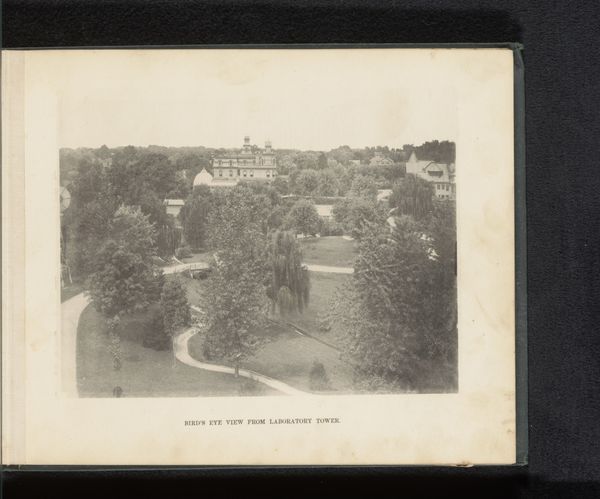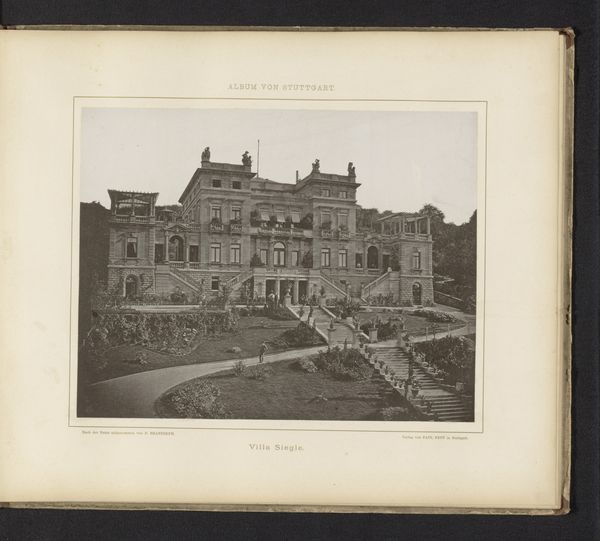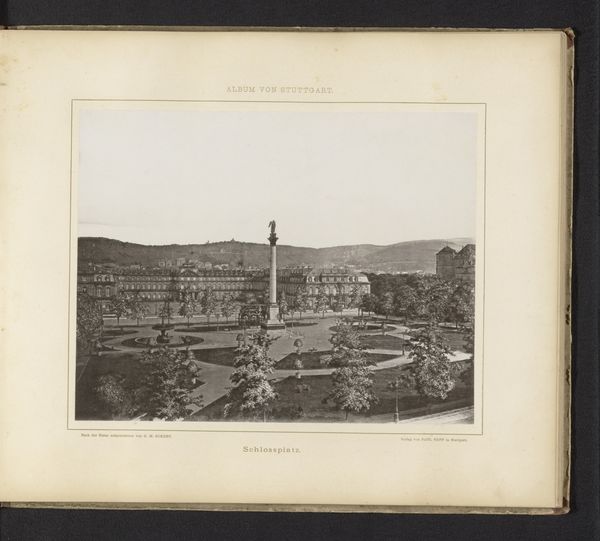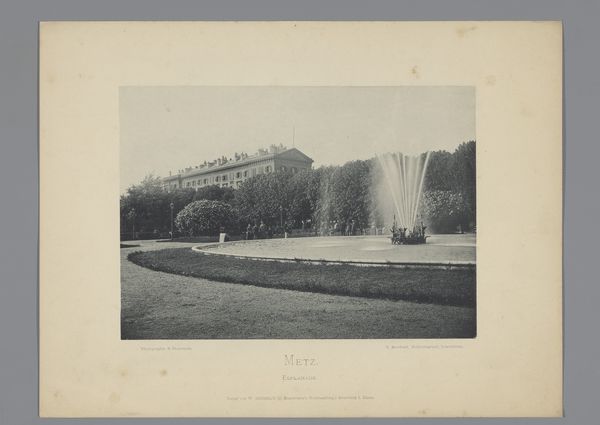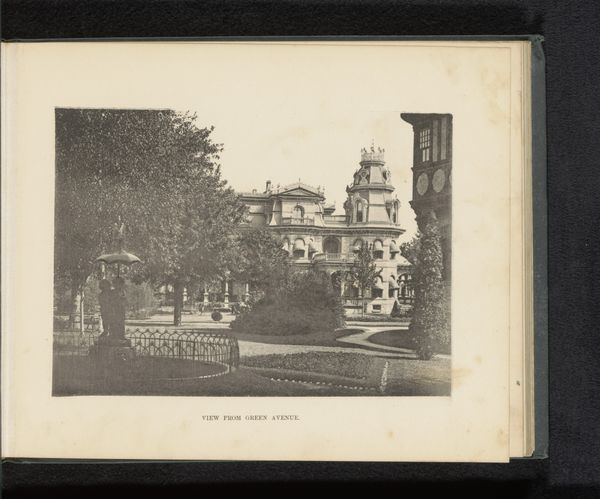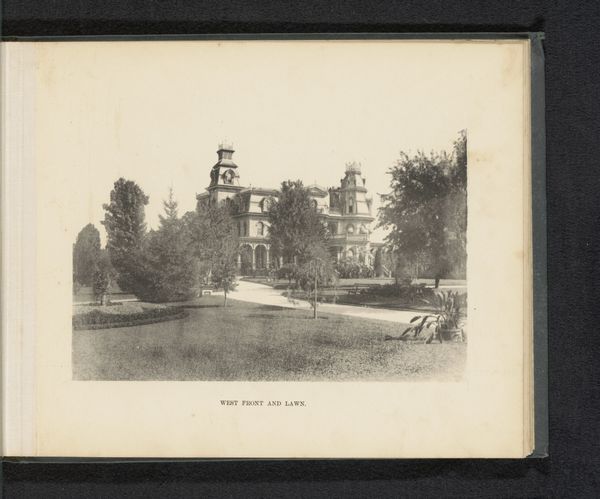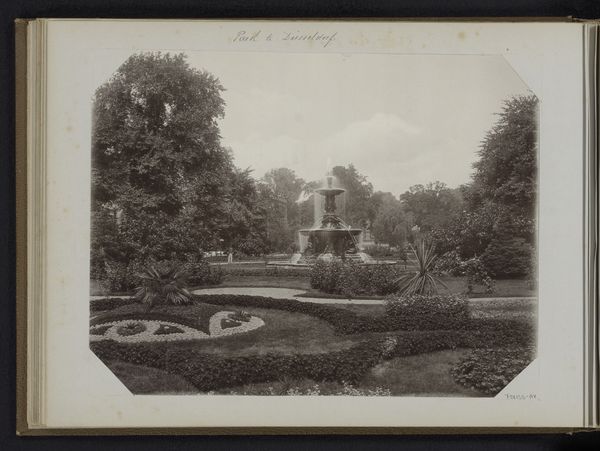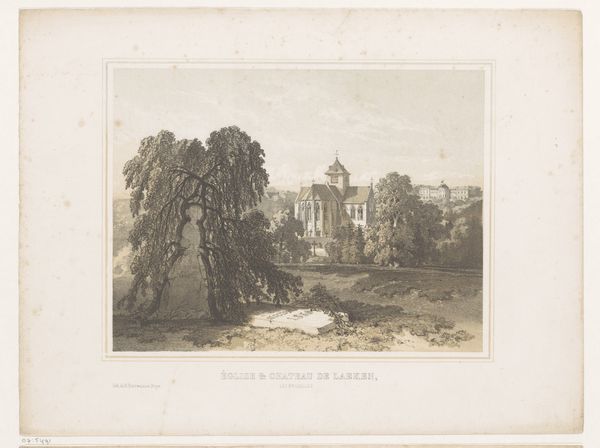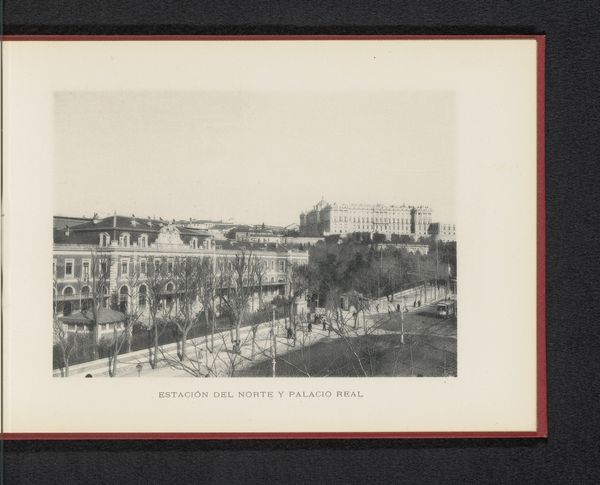
Gezicht op de kasteeltuin en dierentuin Wilhelma in Stuttgart, Duitsland before 1875
0:00
0:00
print, photography, albumen-print, architecture
# print
#
landscape
#
photography
#
cityscape
#
albumen-print
#
architecture
Dimensions: height 192 mm, width 249 mm
Copyright: Rijks Museum: Open Domain
Editor: Here we have Georg Maria Eckert's "Gezicht op de kasteeltuin en dierentuin Wilhelma in Stuttgart, Duitsland," a photograph from before 1875, rendered as an albumen print. The image feels meticulously composed, almost staged. What draws your attention when you look at this piece? Curator: The way the photograph showcases the Wilhelma draws me to the themes of power and control intertwined with early industrialization. Do you notice how nature is meticulously arranged? This wasn't wild—this was curated, controlled. Editor: I see what you mean. The landscaping is very deliberate, and then you have the imposing architecture looming behind it. Curator: Exactly. And the statue of the animal...consider the ethics of zoos in this period, the objectification of the natural world for the entertainment and edification of a privileged class. Editor: That’s a pretty stark contrast to how we think about animals and the environment now. It’s making me question who this "album of Stuttgart" was really for, and what values it promoted. Curator: Precisely! These albums were often commissioned, designed to project a specific image of the city, of progress, and of its place in the global order. This photograph isn't just a pretty picture; it's a document of power, class, and the control over both nature and perception. How does understanding that influence your initial feelings about the image? Editor: It makes it much less serene. I see the privilege in it, the implicit statement about who gets to enjoy this space, and at what cost. Curator: These historical images provide critical insights into the values of past societies. Examining these traces prompts us to ask crucial questions about power, representation, and our relationship to the world around us. Editor: Definitely food for thought. Thanks for that new perspective!
Comments
No comments
Be the first to comment and join the conversation on the ultimate creative platform.
